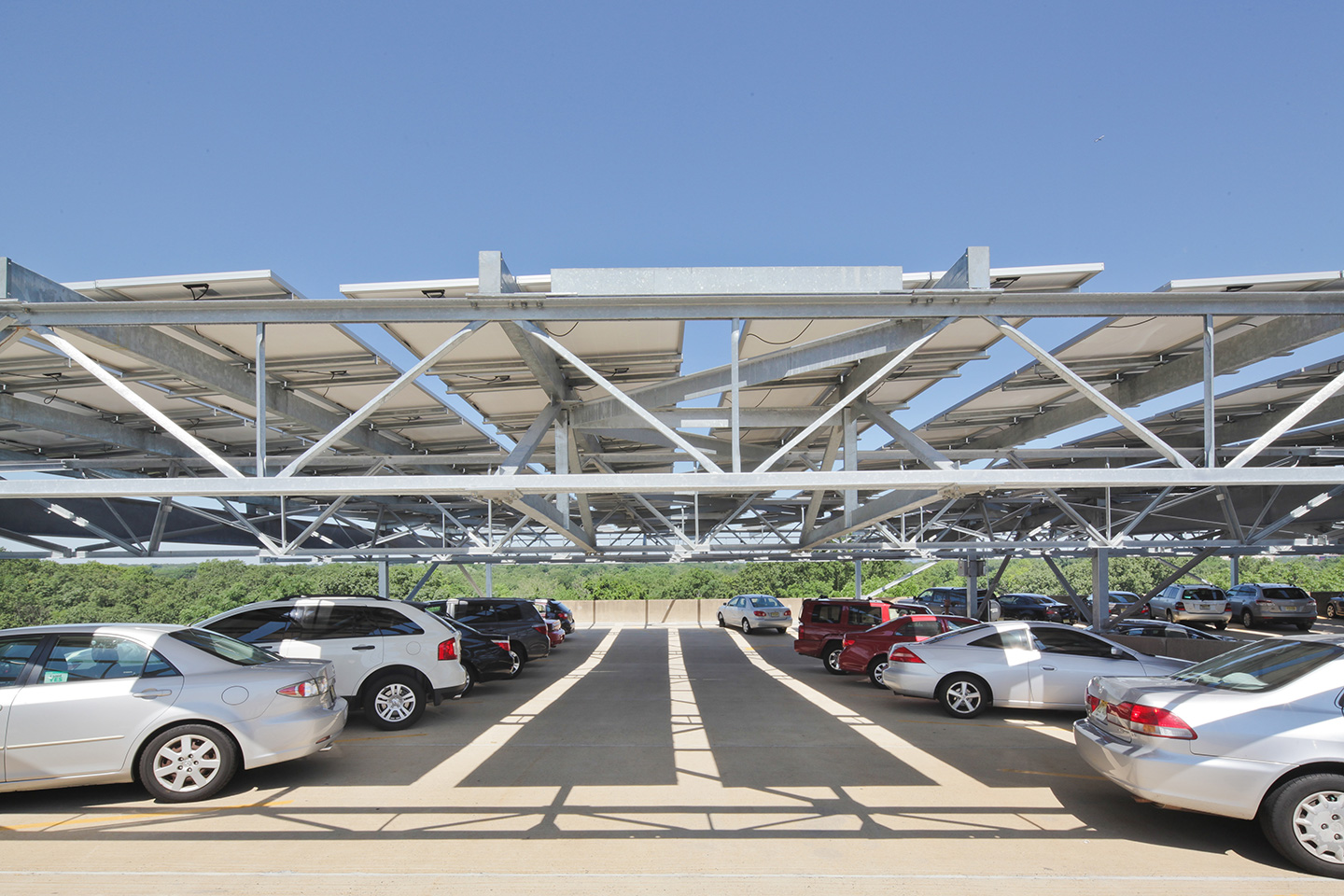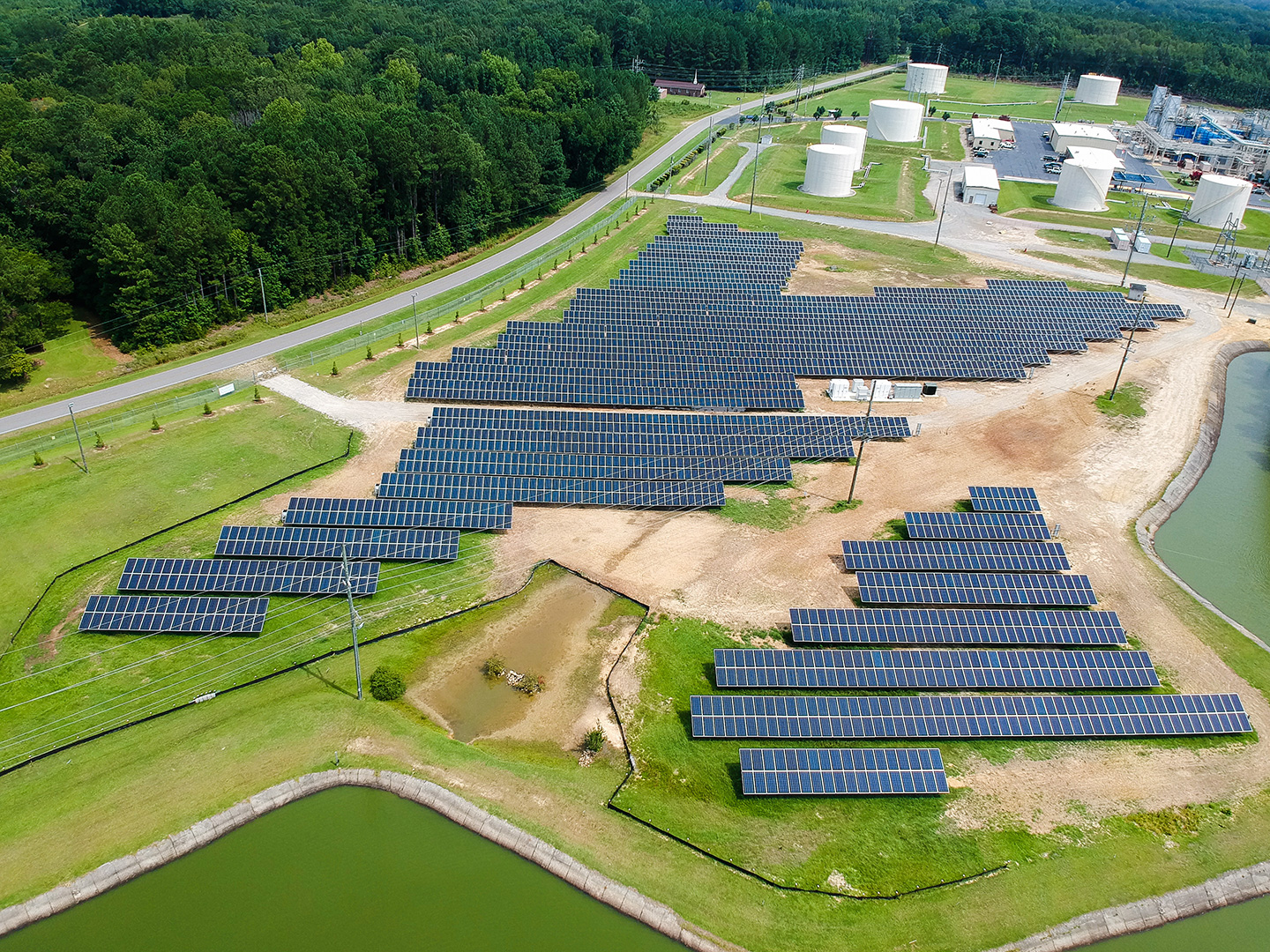Put simply, solar power is the energy delivered to the earth by the sun. You probably learned about photosynthesis in middle or high school. As a refresher, it’s the process that occurs when solar energy is used to convert carbon dioxide and water into food by green plants and other organisms. From our earliest days, humans have harnessed the power of the sun and its heat to move civilization forward.
Using Solar Power in Modern Culture
There are two forms of energy generated from the sun for our use: electricity and heat. For example, early 20th century solar systems heated water to generate warmth for homes. I remember my uncle, a plumber, building his own solar system used to heat his swimming pool in the 1970s. Now, we’re seeing solar installations pop up across the U.S., from massive solar farms spanning hundreds or thousands of acres, to residential roof-mounted solar panels in homes across suburbia. But it’s not just solar farms, solar power can also be harnessed and stored for later uses.
A Brief History of Photovoltaic Cells
The modern photovoltaic cell has its roots in selenium wafers developed by Charles Fritts in 1883. Today’s most common photovoltaic cells are made of silicone and were developed by Daryl Chapman, Calvin Fuller, and Gerald Pearson at Bell Labs in 1954. That cell had an efficiency of just 4%, meaning it converted 4% of the incoming solar power to electricity. Today’s solar cells in lab testing environments have an efficiency approaching 50%.
Battery Energy Storage Systems
It’s becoming increasingly popular for solar systems to include battery energy storage systems (BESS) on residential, commercial, industrial, and even utility scale projects. BESS store energy is generally used for onsite use either at night, when power isn’t generated from solar, or in the event of a power failure. Lithium ion batteries, like those used in many electric vehicles, are a popular choice for residential and commercial systems. Other options include older lead acid or newer flow batteries.
Solar Systems
There are three main types of solar systems:
- Roof mounted
- Ground mounted
- Canopy
Residential solar systems typically utilize rooftop infrastructure, although it is possible to install a residential ground-mounted system if enough open space is available. Rooftop solar is also a primary use in commercial projects like warehouses and large retail buildings with large, flat open rooftops. Canopy solar systems are typically installed over parking lots where they have the added benefit of providing shade and weather protection for the cars beneath.
 Canopy solar systems serve a dual purpose of collecting solar power while also providing shade and weather protection for the cars beneath.
Canopy solar systems serve a dual purpose of collecting solar power while also providing shade and weather protection for the cars beneath.
The two most prevalent types of ground-mounted systems include fixed-tilt systems and single-axis tracker systems. Fixed-tilt systems, also used on rooftops, are placed in rows running east and west. Single-axis trackers are designed like wings on an airplane. A long bar is installed running north and south, and the panels are extended from the bar. As the sun moves through the day from east to west, the tracker system rotates to follow the sun, obtaining optimum energy capture. Ground-mount systems are the largest system and can be utilized for any size system.
 One example of a ground-mounted solar system is this one located at a large site in North Carolina that collects solar energy for the community.
One example of a ground-mounted solar system is this one located at a large site in North Carolina that collects solar energy for the community.
So, as long as the sun is shining, there’s a multitude of ways to capture its energy to be used now or later.